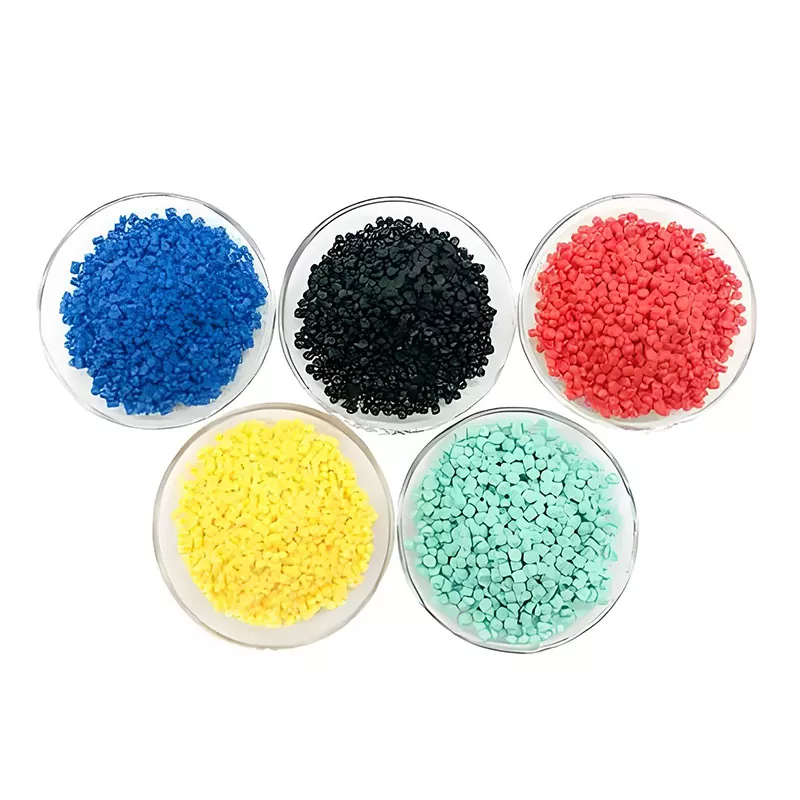What type of equipment is needed to handle and process injection molding pellets?
2024-09-09

What are the types of equipment needed for handling injection molding pellets?
The equipment needed for handling injection molding pellets includes a hopper to store the pellets, a loader to move the pellets from the hopper to the processing machine, a heating unit to melt the pellets, and a mold to shape the melted plastic. The heating unit can be an electric or gas-fired unit, and there are also machines that use hot oil or steam to heat the pellets.How do you choose the right equipment for handling injection molding pellets?
Choosing the right equipment for handling injection molding pellets depends on factors such as the type of plastic being used, the size of the pellets, and the desired properties of the finished product. It is important to work with a knowledgeable equipment supplier who can help you select the right equipment for your specific needs.What are the safety considerations when handling injection molding pellets?
Safety considerations when handling injection molding pellets include proper loading and unloading procedures to prevent accidents, regular maintenance of equipment to prevent malfunctions, and appropriate personal protective equipment (PPE) such as gloves and goggles to protect against burns and exposure to fumes.In summary, injection molding pellets are essential to the manufacturing process of many plastic products. The equipment needed to handle and process these pellets varies depending on the size and type of pellets being used, as well as the specific needs of the manufacturing process. It is important to choose the right equipment and take proper safety precautions when handling these materials.
Xiamen Wanpeisi Technology Co.,Ltd. is a leading manufacturer and supplier of injection molding equipment and services. Our company is committed to providing high-quality products and excellent customer service to businesses of all sizes. For more information about our products and services, please visit our website at https://www.wpsplastics.com. To contact us directly, please email jessica@wpsplastics.com.
Scientific Papers
1. S. Kim and J. Lee. 2020. Injection Molding Simulation-Based Evaluation of Injection Molding Process Conditions for Polypropylene. Polymers 12(1): 15.
2. J. Paszt and A. J. Ardila. 2020. Effects of Raw Material Properties on Injection Molding of Non-Symmetric Parts. Materials 13(1): 237.
3. M. Matsui, M. Sakamoto, and K. Okamoto. 2020. Development and Verification of Frictional Heating Injection Molding Simulation Based on a Discretized Analysis Model of Pellet-Metal Contact. Polymers 12(6): 1290.
4. T. Sorva, S.-M. Haimi, and T. Kanerva. 2020. An Investigation of Warpage Defects in Injection Molding Using MoldFlow Analysis. Polymers 12(4): 917.
5. K. Mishra, R. Baral, and S. R. Das. 2019. Experimental and Numerical Simulation Analysis of Injection Molding Process of HDPE for Improvement of Product Quality. Silicon 11(5): 2393-402.
6. B. V. N. Prasad, G. Chandramohan Reddy, and M. R. P. Reddy. 2019. Influence of Mold Temperature on the Mechanical Properties of Abs Injection Moulded Specimen. Materials Today: Proceedings 20(2): 732-6.
7. A. Raja and A. Natarajan. 2019. Multi-Objective Optimization of Injection Molding Process Parameters. Integration 68: 33-41.
8. A. Cebulla and M. Patel. 2018. Injection Moulding of Miniaturized Polymer Components via Microfabricated Tool Inserts. Materials Science and Engineering: C 85: 52-9.
9. M. M. Al-Saleh, S. A. Abueidda, and B. D. Ulery. 2018. Numerical Simulation and Experimental Evaluation of Large-Scale Injection Molding of Thermoplastics. Materials 11(7): 1072.
10. R. Mičůcha, J. Šafka, and I. Bárta. 2018. Rheological Investigation of Polymer Melts in Injection Molding under Pressure Load Change. Journal of Polymer Engineering 38(5): 459-73.


